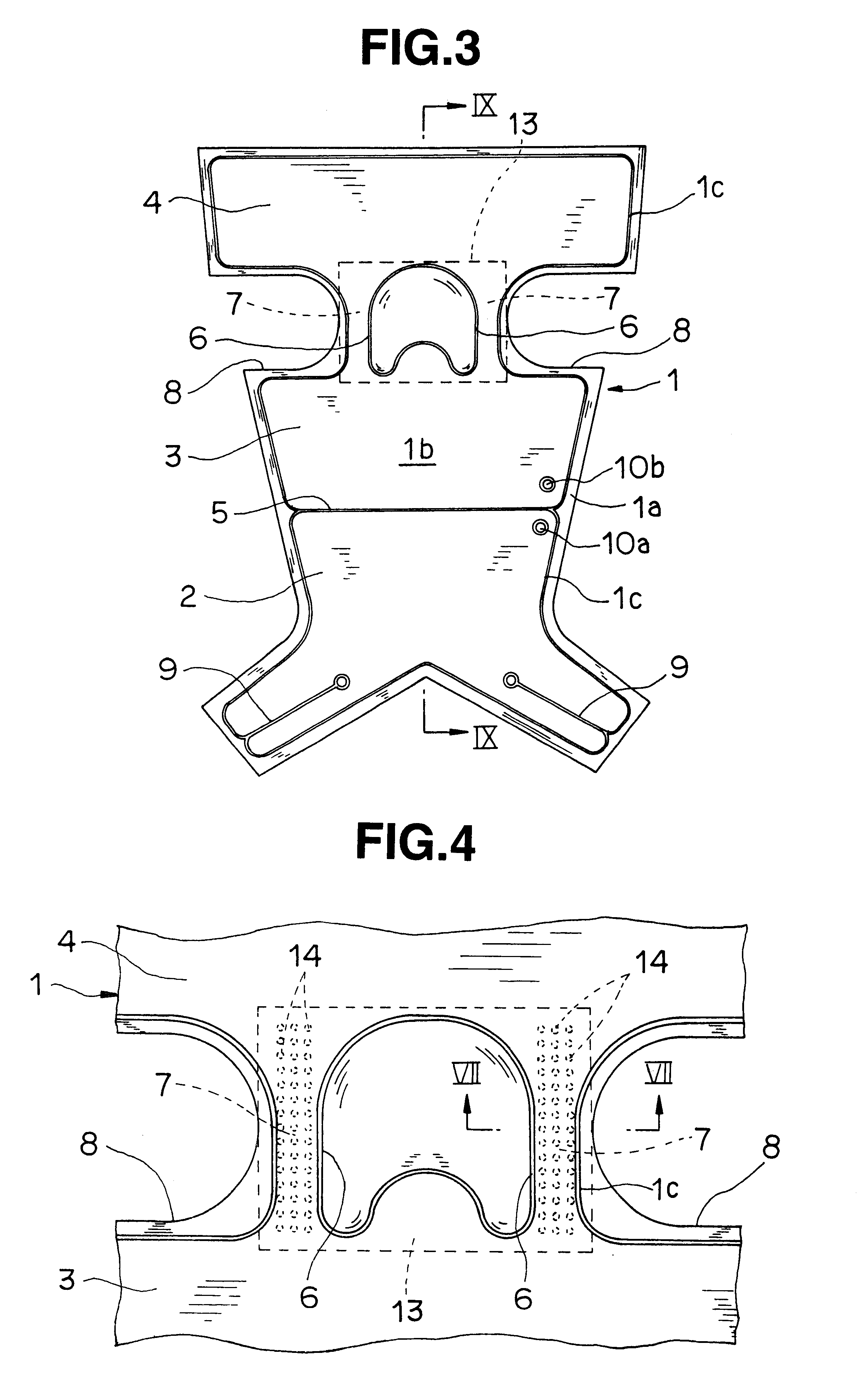Compressing device for pneumatic massager
a compression device and massager technology, applied in the field of compression devices for pneumatic massagers, can solve the problems of increasing the cost of the massager, requiring the user to incur difficulty in bending the joints, and prolonging the time for attachmen
- Summary
- Abstract
- Description
- Claims
- Application Information
AI Technical Summary
Benefits of technology
Problems solved by technology
Method used
Image
Examples
Embodiment Construction
Preferred embodiments of the compressing device for a pneumatic massager according to this invention will be described below with reference to the accompanying diagrams.
A bag body 1 is produced by forming an outer air-impervious resin sheet 1a of small elasticity and an inner air-impervious resin sheet 1b of large elasticity in such a shape as illustrated in FIG. 3 and FIG. 9 and fusing the matched peripheries as by a high-frequency heating means.
As the raw material for these sheets 1a and 1b, a synthetic resin such as urethane resin or polyvinyl chloride resin is used.
Two sheet members formed roughly in the shape of a leg and containing notches 8 in the approximate shape of the letter U at the knee position as illustrated in FIGS. 1 through 3 are superposed, and the matched peripheries of the sheet members are fused at 1c by the use of a high-frequency heating means, for example, to obtain one bag body 1. The sheet members are then fused in a short width direction to form a sealed ...
PUM
 Login to View More
Login to View More Abstract
Description
Claims
Application Information
 Login to View More
Login to View More - R&D
- Intellectual Property
- Life Sciences
- Materials
- Tech Scout
- Unparalleled Data Quality
- Higher Quality Content
- 60% Fewer Hallucinations
Browse by: Latest US Patents, China's latest patents, Technical Efficacy Thesaurus, Application Domain, Technology Topic, Popular Technical Reports.
© 2025 PatSnap. All rights reserved.Legal|Privacy policy|Modern Slavery Act Transparency Statement|Sitemap|About US| Contact US: help@patsnap.com



